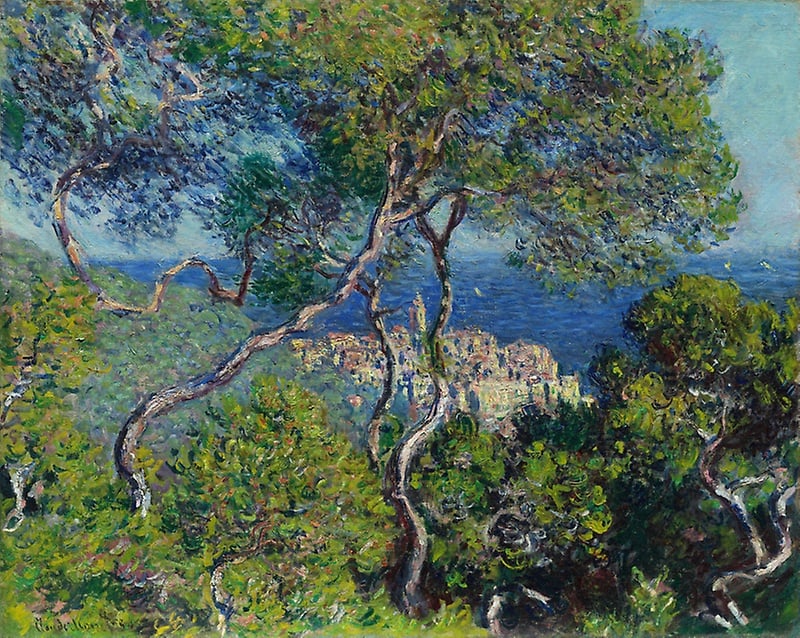Italy experienced a significant cinematic milestone when it was selected as the backdrop for the film Call Me By Your Name (2017, dir. Luca Guadagnino). However, Elio and Oliver were not the first to explore the hidden gems of Bordighera. Decades prior, Monet ventured to this picturesque destination, facing a formidable task in attempting to depict its abundant beauty. Discover the fascinating perspective of Monet’s Bordighera and immerse yourself in his artistic journey.

If, like me, you’re captivated by the enchanting world of Call Me By Your Name, whether through the mesmerizing film, the poignant book penned by André Aciman, or both, then you understand the longing it leaves in our hearts for more, even if it means shedding tears for a good half hour.
For those who have experienced the movie or delved into the book, you may recall a special moment where Claude Monet is mentioned (and for those who haven’t, well, now you know). Elio takes Oliver to his hidden sanctuary and reveals that Monet once ventured there to capture its beauty on canvas. While this revelation could be dismissed as a mere embellishment for the sake of storytelling, it is, in fact, entirely true. The place in question is Bordighera, a breathtaking coastal town located near the Italian-French border, although the film director Luca Guadagnino chose to relocate the story to Lombardy.
Intrigued by Monet’s connection to this haven, we invite you to delve deeper into the allure of Bordighera and uncover the artistic ties that bind it to both history and imagination. Before Monet started dedicating almost all of his work to painting his garden in Giverny, due to his blindness, he actually traveled quite a lot. He went to London, Rouen, Venice, the Netherlands, among many other cities.

His trip to Bordighera happened because he decided to take advantage of the European rail network that was spreading really fast. He first arrived in Bordighera in 1883 when he and Renoir went to visit Cézanne at l’Estaque. But it was in 1884 that he decided to go back and stay for three months. He arrived in mid-January and thought that the blue skies were a great contrast to the grey weather from the French winter days.

Monet was amazed by all the nature around Bordighera since it had a lot of trees, like palm trees, that he usually didn’t see in Paris. Many other painters had gone to this city and painting the views, but Monet decided to differ from that and exclusively paint the vegetation around him and only occasionally include some of the landscape and houses but always in a minor way. This made him use colors that he had never used before which also led him to a state of almost madness because he was afraid of not being able to express how beautiful everything was and captured the essence of the place. He was so used to working with a certain color palette that he was afraid he would not be able to pick the right shades since they were all new to his painting. He wrote to his wife Alice Hoschedé a lot about this topic:
It is extremely difficult to do and it is very time-consuming, mostly because the large self-contained motifs are rare. It is too thick with dense foliage, and all you can find are motifs with lots of detail, jumbles terribly to paint and I, in contrast, am the man of isolated trees and large spaces.
This made him not being able to finish any of the works he started in Bordighera although he finished all of them once he got home. In these three months, he also went to Dolceaqua which made him go home with more than 40 paintings, most of them still in need of a finishing touch.

